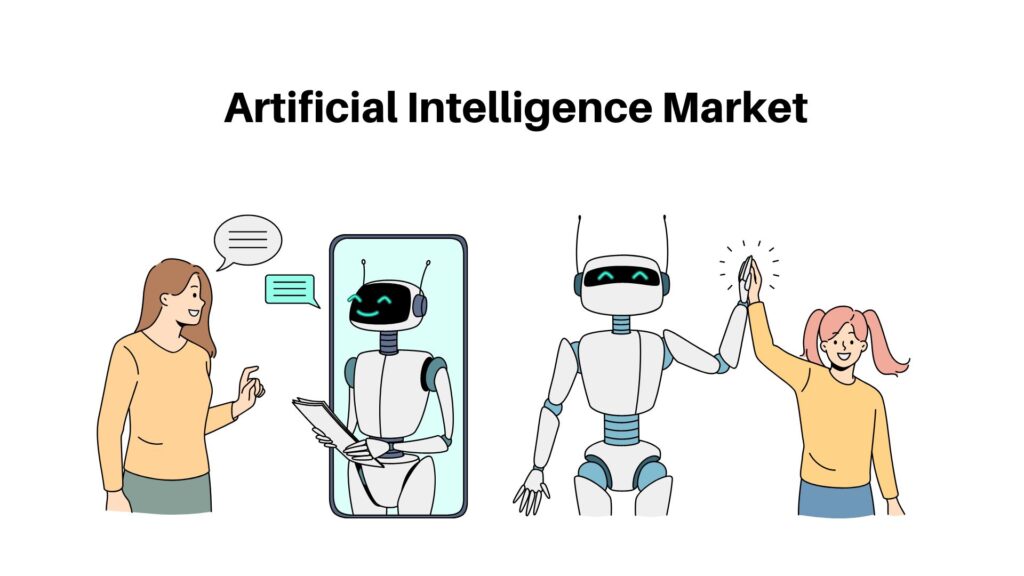
The world of artificial intelligence is evolving at a breakneck pace. As businesses and consumers alike embrace the transformative power of AI, the market is set to explode. Experts predict that by 2027, the AI hardware and software sector could reach an astonishing $990 billion in growth. This isn’t just a jump in numbers; it signifies a monumental shift in how we interact with technology every day.
From smart assistants that manage our schedules to advanced algorithms redefining industries, AI is unlocking potential across various landscapes. But what’s driving this surge? With groundbreaking advancements in technology and increasing adoption rates across key sectors, there’s much more than meets the eye. Join us as we explore the growth trajectory of AI, its major players, and what challenges lie ahead for this dynamic market. The future looks bright for those ready to harness its capabilities!
The AI market

The AI market is rapidly becoming a cornerstone of modern economies. It encompasses a vast array of technologies, from machine learning algorithms to natural language processing systems.
Businesses across various sectors are integrating AI solutions to enhance efficiency and drive innovation. This shift reflects a growing recognition of the potential benefits that intelligent systems can provide.
Consumer products, like smart home devices and chatbots, have also gained significant traction. These applications showcase how AI can improve everyday life while changing consumer expectations.
Investment in research and development continues to surge as companies seek competitive advantages through cutting-edge technology. Startups and established firms alike are racing to capture their share of this lucrative landscape.
As the demand for smarter solutions climbs, so does the pressure on organizations to adapt or risk falling behind. The future landscape promises even more exciting developments as AI becomes integrated into our daily routines.
Growth and potential of AI hardware and software market

The AI hardware and software market is experiencing explosive growth. As businesses recognize the transformative power of artificial intelligence, investment in these technologies has surged.
Analysts project that by 2027, this sector could reach an astonishing $990 billion. This figure reflects not just current trends but also future potential. Companies are racing to develop innovative solutions tailored for diverse industries.
Emerging applications range from automation in manufacturing to enhanced customer experiences in retail. The versatility of AI systems allows them to adapt across various sectors seamlessly.
Moreover, advancements in computing power and data storage have fueled this expansion. With more sophisticated algorithms emerging daily, the scope of what AI can achieve continues to broaden significantly.
As organizations embrace digital transformation, the demand for cutting-edge hardware and reliable software will only increase further. This growing reliance on intelligent systems signifies a monumental shift toward smarter business operations worldwide.
Advancements in AI technology driving market growth
Recent advancements in AI technology have transformed the landscape of various industries. From machine learning algorithms to natural language processing, the tools available today are more sophisticated than ever.
These innovations enable businesses to harness vast amounts of data for insights that were previously unattainable. Enhanced predictive analytics allows companies to anticipate customer behavior and optimize operations effectively.
Moreover, breakthroughs in neural networks have improved image and speech recognition capabilities. This expansion opens doors for new applications across sectors like healthcare, finance, and automotive.
The integration of AI into everyday products has made smart technology accessible to consumers. As these technologies evolve, they fuel further investment and interest in the market’s potential growth.
With each advancement comes a ripple effect, encouraging organizations to adopt AI solutions that drive efficiency and innovation forward.
Top players in the AI hardware and software market
The AI hardware and software market is vibrant and competitive, featuring several key players leading the charge. Companies like NVIDIA have become synonymous with graphics processing units (GPUs) essential for deep learning applications. Their technology powers numerous AI solutions across various sectors.
Google also stands tall in this space. With its Tensor Processing Units (TPUs), they provide robust cloud-based AI services that foster innovation and efficiency for businesses worldwide.
Another notable contender is IBM, which focuses on enterprise-level solutions through its Watson platform. This allows industries to harness advanced analytics and machine learning capabilities effectively.
Microsoft has made significant strides as well, integrating AI into its suite of products while offering Azure’s powerful infrastructure for developers looking to build intelligent applications.
These companies illustrate the dynamic nature of the market, each contributing unique technologies that push boundaries and redefine possibilities in artificial intelligence.
Key industries adopting AI technology
The adoption of AI technology is reshaping numerous industries. Healthcare stands out as a key sector. Advanced algorithms analyze medical images and predict patient outcomes, enhancing treatment precision.
Finance is another industry embracing AI rapidly. Automation in trading and risk assessment allows for smarter investment strategies. Fraud detection systems powered by machine learning are becoming standard practice.
Retail has also seen significant transformation through AI-driven analytics. Businesses personalize customer experiences based on shopping behaviors, improving satisfaction and loyalty.
Manufacturing relies heavily on smart robotics now more than ever. These machines optimize production processes, reducing downtime and increasing efficiency.
Education isn’t left behind either; personalized learning experiences tailor academic content to individual student needs using adaptive learning technologies.
As these industries evolve with AI, the potential for innovation continues to expand exponentially across various domains.
Challenges and limitations for the market’s growth
Despite the booming AI hardware and software market, several challenges hinder its growth. High development costs often limit access to cutting-edge technology. Small businesses may find it difficult to compete with larger firms that can invest significantly in research.
Data privacy concerns also play a crucial role. As companies increasingly rely on data-driven insights, securing sensitive information becomes paramount. Any breach could lead to loss of trust and significant legal ramifications.
Moreover, the shortage of skilled professionals remains a pressing issue. Companies struggle to find talent equipped with the necessary expertise in AI systems and algorithms.
Regulatory hurdles complicate adoption rates across various sectors. Governments worldwide are still navigating how best to manage this powerful technology while ensuring ethical use and compliance standards are met.
Future projections and predictions for the market
As we look ahead, the AI hardware and software market is set to soar beyond $990 billion by 2027. This prediction stems from increasing investments in research and development across various sectors.
Emerging technologies like quantum computing and edge AI are expected to play a pivotal role in shaping this landscape. Their integration will enhance processing power while reducing latency, making applications more efficient.
Moreover, with businesses increasingly leveraging machine learning algorithms for data analysis, demand for tailored solutions will rise. Industries such as healthcare, finance, and automotive are likely to lead this charge.
The global push towards automation further accelerates growth prospects. As organizations aim for efficiency and cost reduction, AI adoption will become essential rather than optional.
Consumer awareness about AI’s benefits continues to expand too. This growing interest could drive innovations that cater specifically to user needs—unlocking even greater potential within the marketplace.
Conclusion
The future of the AI hardware and software market is promising. With projections indicating a remarkable growth trajectory towards hitting $990 billion by 2027, businesses and investors alike are paying close attention. The advancements in technology continue to fuel this expansion, pushing boundaries and creating new opportunities across various sectors.
As major players enhance their offerings, a wave of innovation sweeps through industries eager to adopt AI solutions. From healthcare to finance, companies are recognizing the value that artificial intelligence brings. However, challenges remain while AI growth happens. Issues like data privacy concerns and integration hurdles must be addressed for sustained progress.
Looking ahead, the momentum seems unstoppable as investments pour into research and development. Embracing AI is no longer optional; it’s becoming essential for staying competitive in today’s fast-paced environment.
With such vibrant potential on the horizon, navigating this landscape will require agility and foresight from all stakeholders involved. As we move forward into this transformative era, one thing remains clear: the journey of unlocking potential through AI has only just begun. Read more on AI growth here.
Visit QAWire for more AI growth over the years and tech news.


